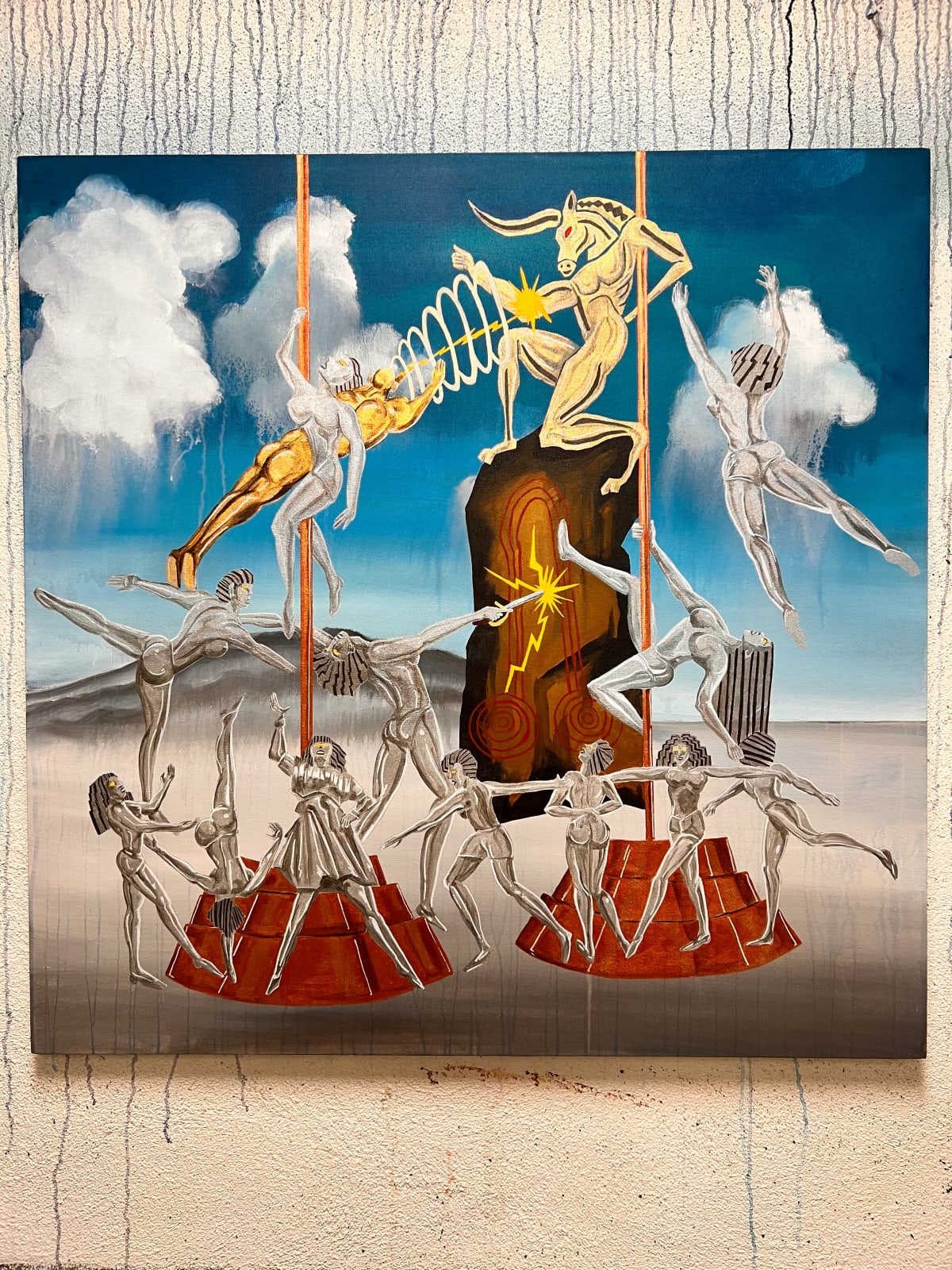
Umar Rashid
God of the Bay of Roses remix featuring Las Amazonas Cromadas, Hombre de Oro, y El Rey Minotauro, 2025
Acrylic on canvas
48 x 48 in
121.9 x 121.9 cm
121.9 x 121.9 cm
Copyright The Artist
In God of the Bay of Roses remix featuring Las Amazonas Cromadas, Hombre de Oro, y El Rey Minotauro, Umar Rashid reimagines Salvador Dalí’s mythic 1944 painting through his own...
In God of the Bay of Roses remix featuring Las Amazonas Cromadas, Hombre de Oro, y El Rey Minotauro, Umar Rashid reimagines Salvador Dalí’s mythic 1944 painting through his own distinctive lens of historical revisionism and social critique. Drawing from years of research into European history and the rise of fascism, Rashid confronts the contradictions between Dalí’s artistic genius and the troubling ideologies intertwined with his persona.
At the center of the composition, Dalí is recast as El Rey Minotauro, the golden bull—a symbol of inflated masculinity and unchecked power—perched atop a Neolithic phallus. Surrounding him, Las Amazonas Cromadas (the Chrome Amazons) stage an uprising, their mirrored bodies gleaming with defiance as they dismantle patriarchal mythologies. Above them, Hombre de Oro (the Golden Man) descends, not as a savior but as a force seeking balance amid destruction.
Rashid’s remix transforms Dalí’s surrealism into a theater of reckoning, replacing divine self-mythology with confrontation and reclamation. Through allegory and humor, the painting reframes history’s recurring struggle between dominance and liberation, offering a new vision of equilibrium forged through resistance.
At the center of the composition, Dalí is recast as El Rey Minotauro, the golden bull—a symbol of inflated masculinity and unchecked power—perched atop a Neolithic phallus. Surrounding him, Las Amazonas Cromadas (the Chrome Amazons) stage an uprising, their mirrored bodies gleaming with defiance as they dismantle patriarchal mythologies. Above them, Hombre de Oro (the Golden Man) descends, not as a savior but as a force seeking balance amid destruction.
Rashid’s remix transforms Dalí’s surrealism into a theater of reckoning, replacing divine self-mythology with confrontation and reclamation. Through allegory and humor, the painting reframes history’s recurring struggle between dominance and liberation, offering a new vision of equilibrium forged through resistance.
Join our mailing list
* denotes required fields
We will process the personal data you have supplied in accordance with our privacy policy (available on request). You can unsubscribe or change your preferences at any time by clicking the link in our emails.
